Public Diplomacy
Regional Promotion Seminar in Fiscal year 2021 (Result)
November 18, 2021
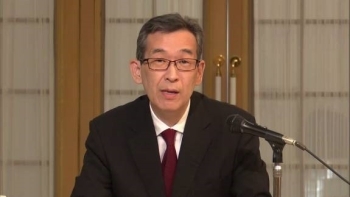
- On October 28, the Ministry of Foreign Affairs hosted the Regional Promotion Seminar in fiscal year 2021 online jointly with Mie Prefecture, Kashihara City in Nara Prefecture, Kagoshima City, Amami City and Yakushima Town in Kagoshima Prefecture, and Awaji Island Tourist Association in Hyogo Prefecture. Around 150 people, mainly from diplomatic corps stationed in Tokyo, participated in the seminar. Due to the Covid-19, this year's seminar was held online. Participating local governments gave elaborate presentations, such as how to make participants discover the attractions of the region by actually holding and experiencing the local specialties delivered in advance.
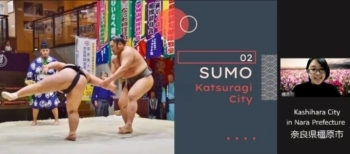
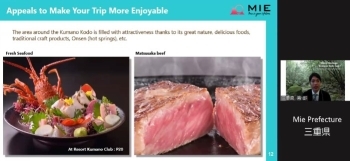
- In the first part of the seminar, Kashihara City in Nara Prefecture promoted the mid-southern region of Nara Prefecture using the four S's - Sake, Sumo, Shrine, and Sakura - as a starting point. A number of attractions were introduced, including Omiwa Shrine, known as the god of sake; Katsuragi City, the birthplace of sumo; Kashihara Shrine, dedicated to Emperor Jinmu, the first emperor of Japan; and the cherry blossoms of Yoshino.
Kagoshima City, Amami City, and Yakushima Town in Kagoshima Prefecture introduced their attractions in terms of nature and culture. Particular emphasis was placed on nature, promoting the eye-catching beauty of the primeval mangrove forests of Amami Oshima Island, which has registered as a World Natural Heritage site in 2021, and the charm of Yakushima Island, which is home to mysterious and rich endemic and rare species.
Mie Prefecture introduced a wide range of tangible and intangible charms related to the Ise Road, a World Heritage Site of the Kumano Kodo. The history, culture, and nature of Ise Jingu Shrine, Magose Pass, and other landmarks closely related to the Ise Road were introduced, and the rich food such as Ise lobster and Matsusaka beef were also promoted.
The Awaji Island Tourist Association, under the theme of "Whirlpools of Naruto Strait", promoted the depth of the whirlpools based on scientific evidence of their history, culture and natural environment. The association also introduced activities for registering the whirlpools as a World Heritage Site in cooperation with local residents' groups and Norway.
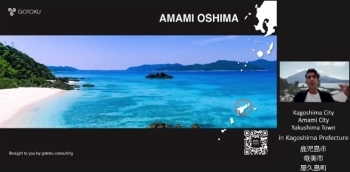
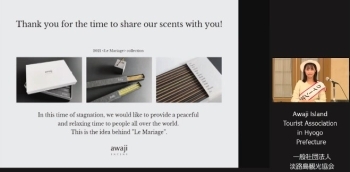
- In the second part of the seminar, representatives from local governments introduced further attractions of the regions, using the local specialties distributed in advance.
Kashihara City promoted its local specialty, persimmons. In Nara Prefecture, which ranks second in production by prefecture, there is Gojo City, which ranks first in production by municipality, and the Nishi-Yoshino-cho area of Gojo City is known as the "home of persimmons".
Kagoshima City, Amami City, and Yakushima Town emphasized the culture and history of Kagoshima City under the title of "The dynamic natural environment and unique global perspective that led to the development of modern Japan" and introduced the history of the Shimazu family, which has continued to rule Southern Kyushu from the Kamakura period to the Edo period, and the fact that the development of Kagoshima has greatly contributed to the development of Japan during the Meiji Industrial Revolution. They also introduced the local specialty green tea that was sent to the participants in advance, the nature of the active volcano Sakurajima, rich seafood, natural hot springs, and other attractions as a tourist destination.
Based on the first part, Mie Prefecture introduced a three-day, two-night model tour from Ise Jingu Shrine to Kumano Hayatama Taisha Shrine, visiting "Okage Yokocho" at Ise Jingu Shrine on the first day, "Onigajo Castle" composed of many large and small rocks created by nature on the second day, and "Maruyama Senmaida", a magnificent terraced rice field on the slope on the third day. On the third day, a tour to Maruyama Senmaida, a magnificent terraced rice field on the slope of the mountain, was proposed in concrete terms to the diplomatic corps.
The Awaji Island Tourist Association introduced the fragrance culture of Awaji Island, which is the largest producer of incense sticks in Japan. They demonstrated how to use the incense sticks distributed in advance and encouraged participants to light them at the same time, so that visitors could experience the history of incense sticks, which dates back 170 years, along with its fragrance.
- We believe this seminar could provide an opportunity for the participants, including the diplomatic corps, to deepen their understanding of each region of Japan, which will lead to the development of exchanges between each country and each region.
- Note
- This seminar has been held several times a year since 2008, and this was the 27th time. Last year’s seminar was postponed due to the Covid-19, therefore this was the first time in last two years.


